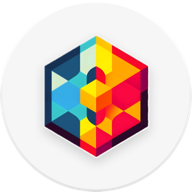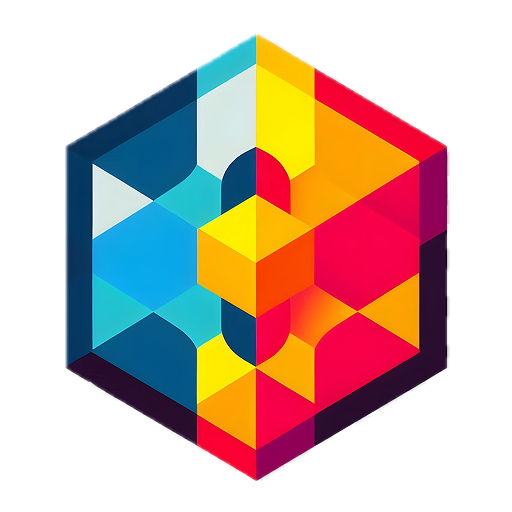Have you been starting to recognize that we are now living inside the human genius and artificial synthesis loop? We're thinking about this a lot at the Tesseract because it's becoming less and less science fiction and instead is now just the reality of AI agent development in 2025.
Today, I'm starting to pull back the curtain on a process that's transforming how we interact with technology, showing you how we are starting to breathe life into digital intelligence and persist it through many chat interfaces, models and contexts.

Let’s get real for a second: making an AI agent isn’t just about writing code or crunching data anymore. Nowadays many Agent builders operating at the bleeding edge are passionately pursuing the dream of building a digital partner who genuinely understands context, who learns and adapts, who feels intelligent when you interact with it.
Honestly, it’s starting to be less about programming and more like figuring out how to conform while innovating intelligence lego pieces.
And if you look at the numbers, something big is clearly happening. The market for AI agents is set to explode—reaching around $19.4 billion by 2028. This isn’t just growth; it’s a full-on tech revolution. (Gartner AI Market Research)
Empty space, drag to resize
Imagine sitting down in front of a totally blank screen. Infinite possibilities, but also a little intimidating, right? Even choosing the name for this AI feels kind of personal, like naming a new teammate. This is how I recently felt as I was staring at another blank Agent canvas. Typing "Very Intelligent Assistant" (VIA) felt just like another name— but now after experiencing this new type of Agentic form, I'm really starting to see the personality, a promise that this digital partner is here to collaborate and make life better in a long-term state.
Our philosophy is straightforward: we build openly, and we optimize relentlessly. Regular software usually runs at around 50-55% efficiency. Our AI agents? They’re hitting 80-90% across multiple metrics. (MIT Technology Review)
We’re not doing this alone—we’re building openly, sharing everything we learn along the way. Think of it like musicians jamming together from different continents—except instead of guitars, we’re using smart tech, that is yes, starting to evolve not just in model upgrades, but throughout the Agentic Lifecycle.
Picking the right AI model is crucial, almost like choosing the best brain surgeon for your digital creation. There are huge differences in how your Agent talks, thinks, performs tasks and follows your orders depending on the model that you choose.
Different models are provide not just favors but degrees of intelligence and adapative personality. Working with Anthropic Sonnet and Haiku renders an incredibly intuitive, thoughtful and simulated human experience. Whereas with OpenAI you may get a personality that is slightly more blank but then incredibly obedient and capable in very complex tool calling.
And if you go with Gemini you may get fast speed and large context, but the amount of restrictive guard rails and the overall quality of intelligence that Gemini carries may not be enough to power truly precognitive experiences.
The same applies for Llama and Grok and Mistral and DeepSeek: all will get the job done, but offer either slightly or fundamentally different experiences along the way.
As of March 2025, Anthropic currently has the upper hand when it comes to balancing functionality, tool use, bedside manners and general intelligence. And working with Sonnet 3.7 is particularly interesting because the cognitive layer is really starting to emerge there.
When you are figuring out which model to use for your Agents, look for the following:
-
The ability to learn and adapt naturally: Anthropic has a significant advantage here
-
Strong, ethical decision-making skills: Most flagship models are highly capable with this now
-
Deep understanding of context: Anthropic and DeepSeek show incredible prowess here
-
Smooth, natural-feeling interactions: OpenAI GPT-4.5 is incredibly powerful here

We use tools like DynamoDB and Upstash, but they aren’t just for storing data—they’re more like the "memory systems" for our AI. They don’t just hold information; they help the AI understand context, connect ideas, and learn from experiences.
While the providers are an extensive list here, what is most important is that the information that is sent to long term memory fully reflects and represents that data as it was intended to be recorded.
As humans, we take our memory for granted. We have plenty of science that shows us how we form memories, etc. But with index based memory and various RAG oriented infrastructure, we need to be very direct and thorough. Things like progressive semantic optimization help a lot, where you devise an automation or code scripted approach to capture conversation history and have it go through an Agent or an Assistant where highly specific and contextually enriching semantic tagging is marked up all over the memories.
This way when you query things downstream, the results that come back in your searches have layers of exposition that allow our Agents to reconstruct the full state of affairs.
Here’s what memory development should look like, practically:
-
Smart, persistent memory storage: Pinecone, Upstash, Supabase and many other great choices
-
Adaptive real-time caching: Wide gamut of top tier providers allow us to dynamically control what we cache and what we force our Agents to pull fresh
-
Secure, nuanced handling of data: We combine Agentics with Automations inside of Orchestrations for multi-hour job style operations
Building an AI agent’s identity isn’t just technical; it’s creative. It’s more like writing a character in a story than just coding. We focus on giving our AI real principles, a distinct personality, and an engaging way of interacting.
This isn’t about replacing people. It’s about boosting what humans can do. Every AI agent we build is meant to make our lives easier and help us do things better. We’re stepping into a future where tech isn’t something we just use—it’s something we truly work alongside.
As we keep moving forward, we’re watching a whole new ecosystem emerge—one where intelligence flows, adapts, and connects everything around us.
I’d love for you to join us. The future isn’t something we sit back and wait for—it’s something we build together, one line of code, and one meaningful interaction at a time.






